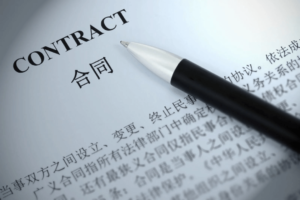In the fast-paced and competitive world of intellectual property, securing patent protection in multiple jurisdictions is essential for inventors and corporations. Article 29 of the Mainland China Patent Law is a crucial provision that facilitates this process by allowing applicants to claim priority for their Chinese patent applications based on earlier filings in foreign countries. However, the stringent requirements and deadlines imposed by this regulation are often overlooked, leading to significant challenges and potential loss of patent rights. This article delves into the detailed provisions of Article 29, the practical implications of missing deadlines, and the strategic considerations necessary to navigate this complex landscape effectively.
Table of Contents
ToggleCore Provisions of Article 29
Article 29 of the PRC Patent Law sets forth the conditions under which an applicant can claim priority for a patent application in China. The key elements of this article include:
Twelve-Month Priority Period for Inventions and Utility Models
An applicant who first files a patent application for an invention or utility model in a foreign country has a twelve-month window from the date of that initial filing to submit a corresponding application in China. By doing so, the applicant can claim the foreign filing date as the effective filing date in China.
Six-Month Priority Period for Designs
For design patents, the priority period is shorter, limited to six months from the date of the first foreign filing. This provision recognizes the often rapidly changing nature of design-related innovations.
International Agreements and Mutual Recognition
The right of priority is granted in accordance with international treaties to which both the foreign country and China are signatories, such as the Paris Convention for the Protection of Industrial Property. Additionally, bilateral agreements of mutual recognition of priority between countries also apply.
Practical Implications and Overlooked Aspects
The priority right provided by Article 29 allows applicants to establish the novelty of their invention, utility model, or design based on the earlier filing date. This mechanism is designed to protect inventors from losing their intellectual property rights due to subsequent disclosures or competing applications filed after their initial filing. Despite these advantages, many applicants inadvertently miss the critical deadlines stipulated by Article 29, leading to potentially severe consequences.
Consequences of Missing the Deadline
If an applicant fails to file the corresponding Chinese application within the twelve-month or six-month priority period, they lose the ability to claim the earlier filing date. Consequently, the Chinese application is treated as a fresh filing, which means it is subject to any prior art that may have emerged after the first foreign filing date. This increased exposure to prior art can significantly reduce the likelihood of obtaining a patent in China.
Common Oversights
The complexity of managing international patent filings often leads to oversights. Each jurisdiction has its legal requirements, procedural norms, and deadlines. Applicants must navigate these variations while ensuring that all filings are synchronized to meet the stipulated timeframes. The failure to adequately coordinate these efforts is a common reason why deadlines are missed.
Impact on Patent Strategy
Missing the priority period can disrupt an entire patent strategy. If an invention is disclosed publicly or if another entity files a similar patent in China during the intervening period, the applicant’s chances of securing patent rights are diminished. This can have far-reaching implications for the commercial exploitation and protection of the invention in one of the world’s largest markets.
Strategic Considerations for Avoiding Pitfalls
To navigate the complexities of Article 29 and avoid common pitfalls, applicants must adopt a strategic and meticulous approach. The following strategies can help ensure compliance with the priority requirements and protect intellectual property effectively:
Early and Detailed Planning
Begin planning the patent filing strategy well in advance. This involves understanding the legal requirements of each target country and synchronizing filings to ensure that all deadlines are met. Early planning allows for the identification and mitigation of potential challenges that may arise during the filing process.
Efficient Administrative Processes
Establish robust administrative processes to track and manage patent filings. This includes setting up reminder systems for critical deadlines, maintaining comprehensive records of all filings, and ensuring that all necessary documents are prepared and submitted on time. Efficient administrative processes help prevent oversights and ensure that all filings are completed within the required timeframes.
Risk Management
Develop a risk management strategy that accounts for the possibility of missed deadlines. This might involve filing multiple provisional applications in key markets to preserve priority dates while finalizing patent applications. By proactively managing risks, applicants can safeguard their intellectual property and mitigate the impact of any potential delays or challenges.
Continuous Monitoring and Adaptation
Continuously monitor the status of all patent applications and adapt strategies as necessary. Changes in international treaties, bilateral agreements, or domestic patent laws can impact priority rights, necessitating updates to the filing strategy. Staying informed about legal and procedural developments ensures that applicants can respond promptly and effectively to any changes that may affect their patent rights.
Conclusion
Article 29 of the PRC Patent Law is a cornerstone for securing patent protection in China, offering the strategic advantage of priority claims based on earlier foreign filings. However, the stringent deadlines and procedural complexities mean that many applicants inadvertently miss these opportunities, jeopardizing their patent rights.
To avoid such pitfalls, inventors and companies must adopt a proactive and strategic approach, leveraging legal expertise, detailed planning, and robust administrative processes. By doing so, they can navigate the complexities of international patent filings, ensuring that their innovations are protected in one of the world’s most dynamic markets. Understanding and adhering to the provisions of Article 29 is not just a legal requirement but a crucial step in safeguarding intellectual property on a global scale.
By comprehensively addressing the requirements of Article 29, applicants can enhance their patent strategies, secure priority rights, and protect their inventions from potential threats. This proactive approach is essential for maintaining a competitive edge and maximizing the commercial potential of innovations in the global marketplace.
FAQs: Understanding Article 29 of the PRC Patent Law
1. What is Article 29 of the PRC Patent Law?
- Article 29 of the PRC Patent Law outlines the conditions under which an applicant can claim priority for a patent application in China based on an earlier application filed in a foreign country. It specifies the timeframes within which the corresponding application must be filed in China to retain the priority date of the first application.
2. What are the key timeframes mentioned in Article 29 for claiming priority?
- For inventions and utility models, the applicant has twelve months from the date of the first foreign filing to file a corresponding application in China. For design patents, the timeframe is six months from the date of the first foreign filing.
3. How does claiming priority benefit an applicant?
- Claiming priority allows the applicant to use the filing date of the first foreign application as the effective filing date in China. This can help establish the novelty of the invention, utility model, or design against other filings and disclosures that occur after the first filing date.
4. What happens if an applicant misses the twelve or six-month priority period?
- If the applicant misses the priority period, the Chinese application will be treated as a fresh filing with the actual filing date. This may expose the application to more prior art, potentially affecting its patentability and making it harder to secure patent protection in China.
5. Are there any international agreements that affect the right of priority in China?
- Yes, the right of priority is granted according to international treaties to which both the foreign country and China are signatories, such as the Paris Convention, or based on bilateral agreements of mutual recognition of priority.
6. Why do many applicants overlook the importance of Article 29?
- Applicants often underestimate the complexity of synchronizing international patent filings across different jurisdictions, leading to missed deadlines. The variation in legal requirements and administrative processes across countries contributes to this oversight.
7. What are the practical implications of missing the priority period?
- Missing the priority period can significantly disrupt an applicant’s patent strategy. It may lead to increased vulnerability to prior art disclosures and competing filings, reducing the likelihood of obtaining a patent in China.
8. What strategies can applicants use to ensure compliance with Article 29?
- Applicants should engage in early and detailed planning of their international patent filing strategy, leveraging legal expertise and setting up robust administrative processes. This includes tracking deadlines, preparing necessary documents in advance, and continuously monitoring the status of applications.
9. How can applicants benefit from understanding and adhering to Article 29?
- By understanding and adhering to the provisions of Article 29, applicants can secure their priority rights, protecting their innovations and gaining a competitive advantage in the Chinese market. This involves proactive planning, strategic filing, and meticulous management of the patent application process.








